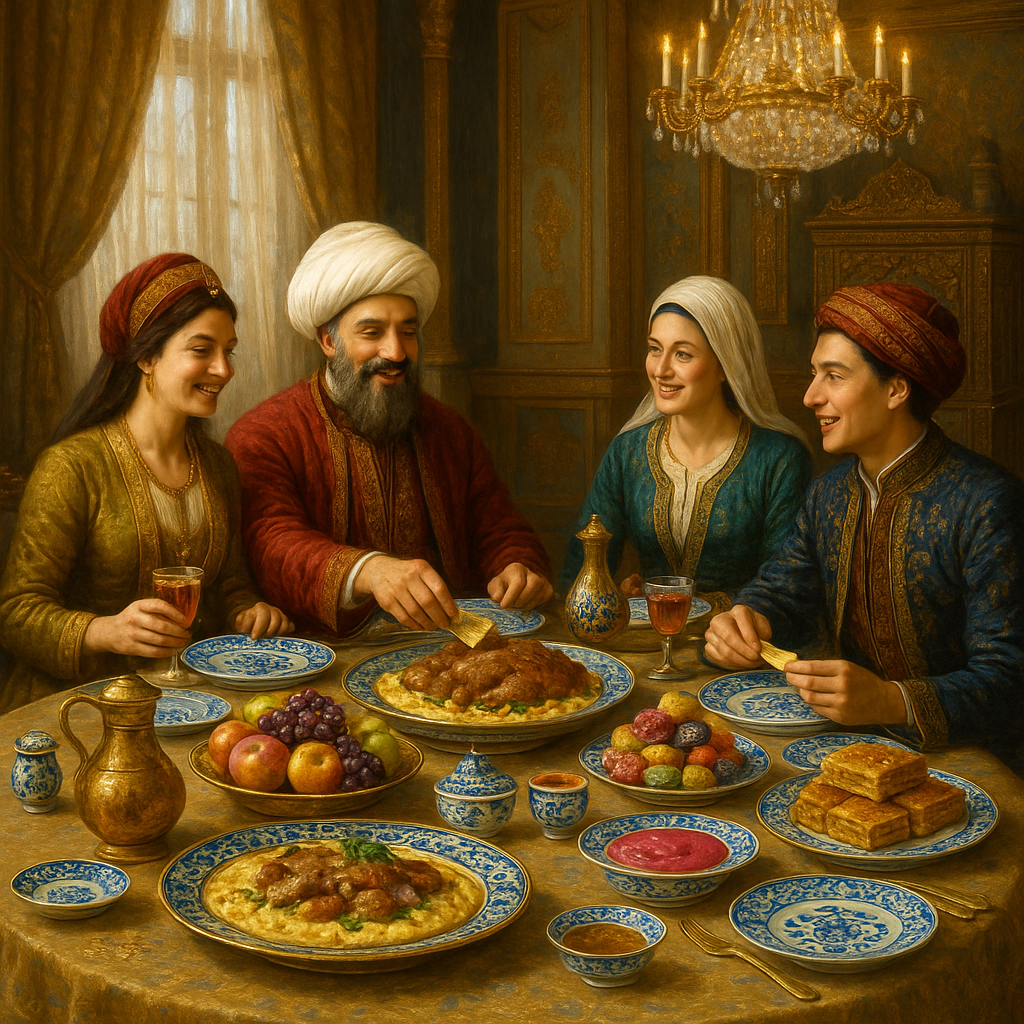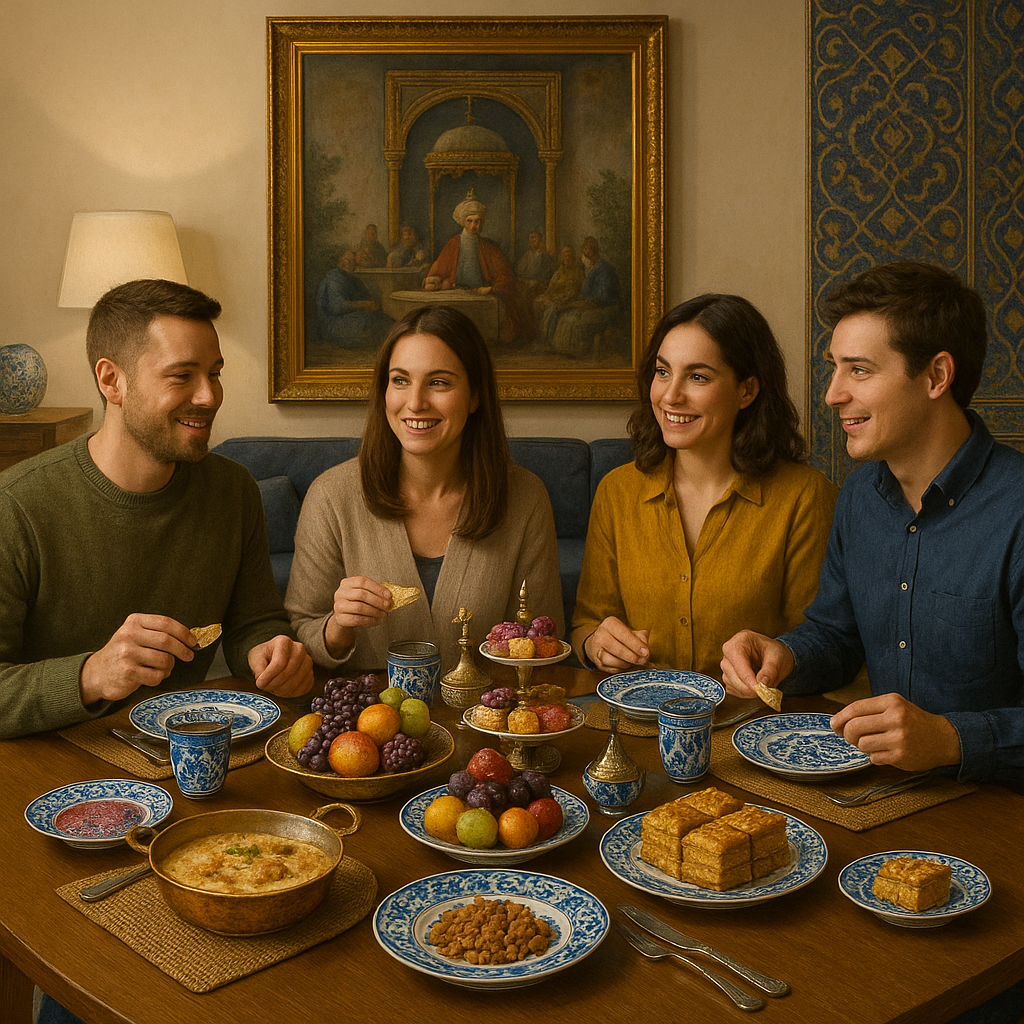From the Ottoman Palace to Our Table: In the Footsteps of Centuries-Old Flavors

The Ottoman Empire was not only remarkable for its political and cultural heritage, but also for its cuisine, which has left an indelible mark for centuries. Many of the flavors that grace our tables today were once brought to life in the skilled hands of palace chefs and, over time, made their way to the tables of the people.
Let us embark together on this magnificent journey "From the Ottoman Palace to Our Table."
The Magnificent Palace Kitchen: The Throne of Flavor
The Ottoman palace kitchen was not merely a place where food was cooked; it was a true art studio. At the heart of the palace, in the "Matbah-ı Âmire", the most skilled chefs and their assistants prepared hundreds of different dishes. Each was crafted with special techniques, meticulously selected ingredients, and great care. These culinary masterpieces were served not only to the sultan and palace members, but also to state guests and, on occasion, the public.
Hünkarbeğendi, mutancana, slow-roasted lamb (kuzu tandır), pilafs, palace halvas, baklava, and sherbets… these were indispensable treasures of the palace tables. Each dish had its own special story, cooking technique, and presentation style. The tables were adorned with gold- and silver-embellished plates, Iznik tiles, and elegant copper trays, creating a dazzling harmony. In the palace, not only the flavor but also the presentation and aesthetic value of a dish held great importance.
Ottoman cuisine reflected the grandeur and wealth of the palace while blending the flavors of Anatolia, the Balkans, the Middle East, and the Mediterranean. Ingredients, spices, and recipes from all corners of the empire were masterfully united in the palace kitchen.
Hidden Stories Behind the Flavors
Every Ottoman dish reflects the life and culture of its era. For example, hünkarbeğendi takes its name from Sultan Abdülaziz's visit to France, inspired by a dish he tasted in Paris and later masterfully adapted to the palace kitchen. Baklava became an indispensable delight of holidays and special occasions, while sherbets on warm summer evenings were not just drinks but offered as remedies.
In particular, every dessert prepared in the palace kitchen held a starring role in celebrations and royal rituals.
Centuries-Old Flavors Reflected in Modern Times
Time has passed, empires have changed, yet the traces of the Ottoman palace cuisine continue to live on our tables today. Many of the dishes served at a Ramadan feast, a wedding banquet, or an intimate evening gathering are inspired by centuries-old palace recipes.
In our modern kitchens, hünkarbeğendi, braised lamb shank, stuffed rice pilaf, sour cherry leaf dolma, olive oil–braised artichokes, quince dessert, and of course baklava, were once the stars of the palace tables. These flavors, inherited from the Ottomans, are reinterpreted by today's chefs and home cooks and brought to our tables with contemporary presentations. Plates with traditional Ottoman motifs, copper coffee pots, glass pitchers, and fruit sherbets create a nostalgic ambiance.
Moreover, the tradition of hospitality in Ottoman cuisine is still alive. The table as a place of gathering and sharing, the variety of dishes and richness of presentation, have become a symbol of social unity and solidarity.

From the Ottoman Era to Today: Where Culture Meets Flavor
Today, the journey "From the Ottoman Palace to Our Table" is not just a story about food; it is also a cultural heritage and a way of life. On our tables, we still witness the meeting of the old and the new, tradition and modernity, where flavors and stories passed down through generations keep a vibrant table culture alive.
Whether it's classic Ottoman dishes prepared at home, palace-inspired delicacies on restaurant menus, or ancient customs revived on special occasions—each carries the elegance of the past and the creativity of the present to our tables. With every new presentation, the mastery and aesthetic spirit that once echoed through the palace kitchens are revived with modern touches.
Ottoman Traces in Gastronomy and Modern Interpretations
Today, chefs blend the unique recipes of the Ottoman Empire with modern gastronomy, creating entirely new flavors. In restaurants, "palace menu" concepts not only revive traditional dishes but also bring back centuries-old Ottoman cooking techniques. Especially slow-cooked meat dishes in copper pots, fruit-infused rice pilafs, and sauces enriched with exotic spices are now presented in a way that appeals to contemporary tastes.
At the same time, in home kitchens, old recipes are preserved either by simplifying them or by enriching them with a wider variety of ingredients. This shows that the creativity and richness of Ottoman cuisine have never faded, continuously taking on new forms at the tables of every generation.
Final Word
At your next meal, think about the rich flavors and lavish presentations on your plates. Perhaps without even realizing it, you are keeping alive the magnificent tradition of the Ottoman palace and taking part in a centuries-old culinary journey. Because sometimes, a single bite is history itself…